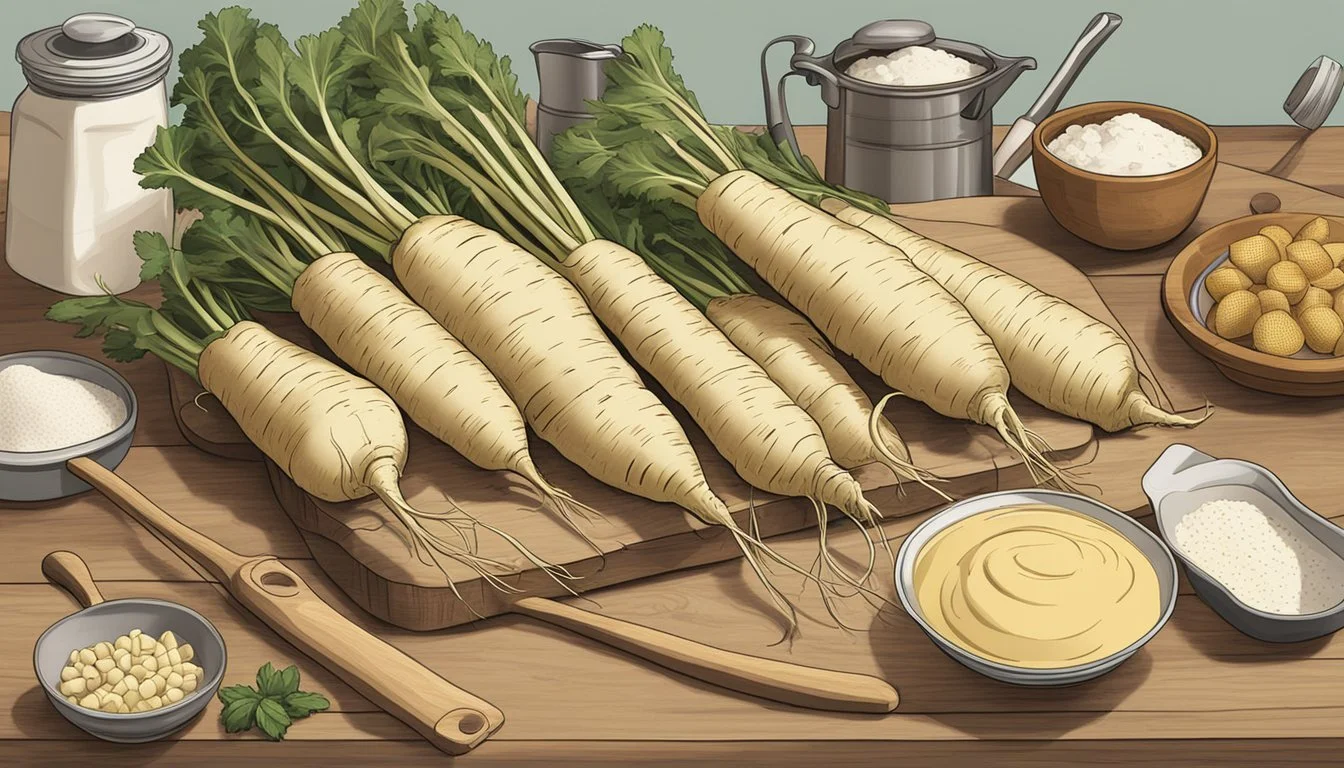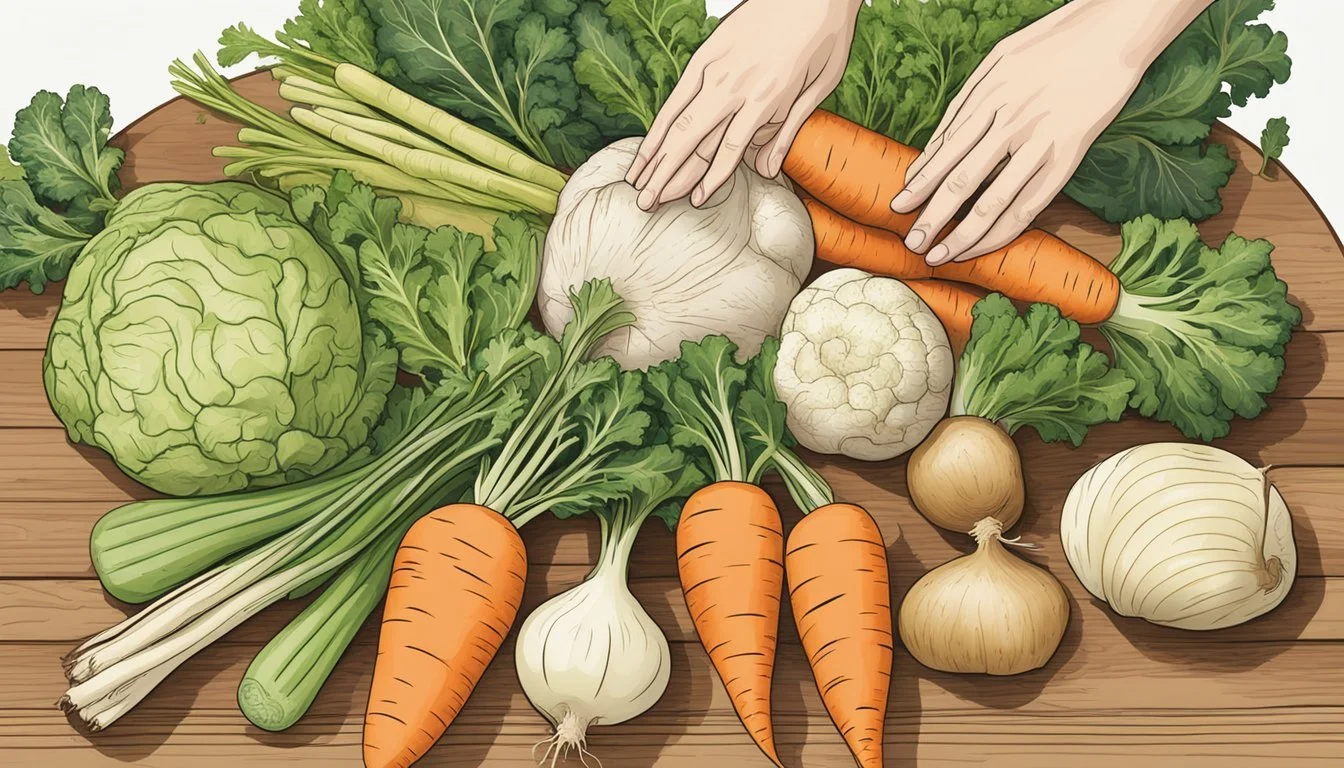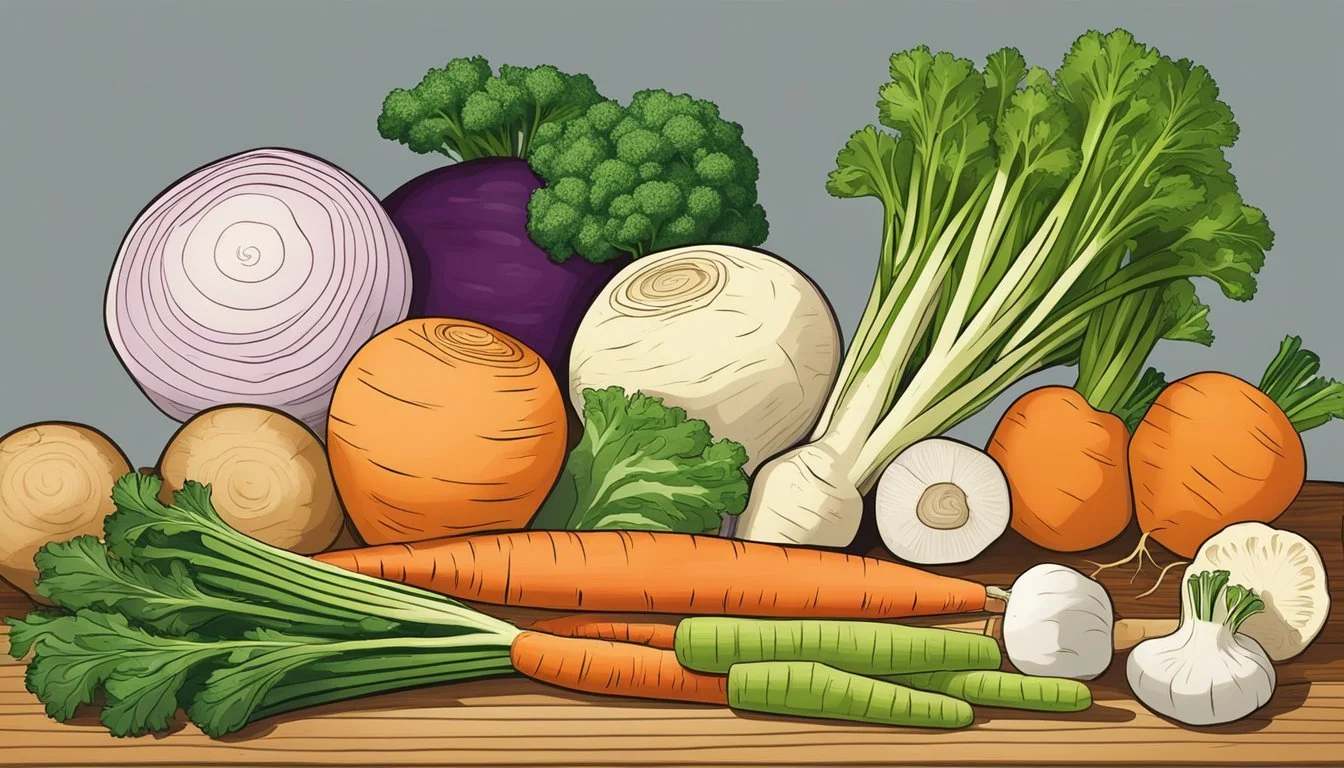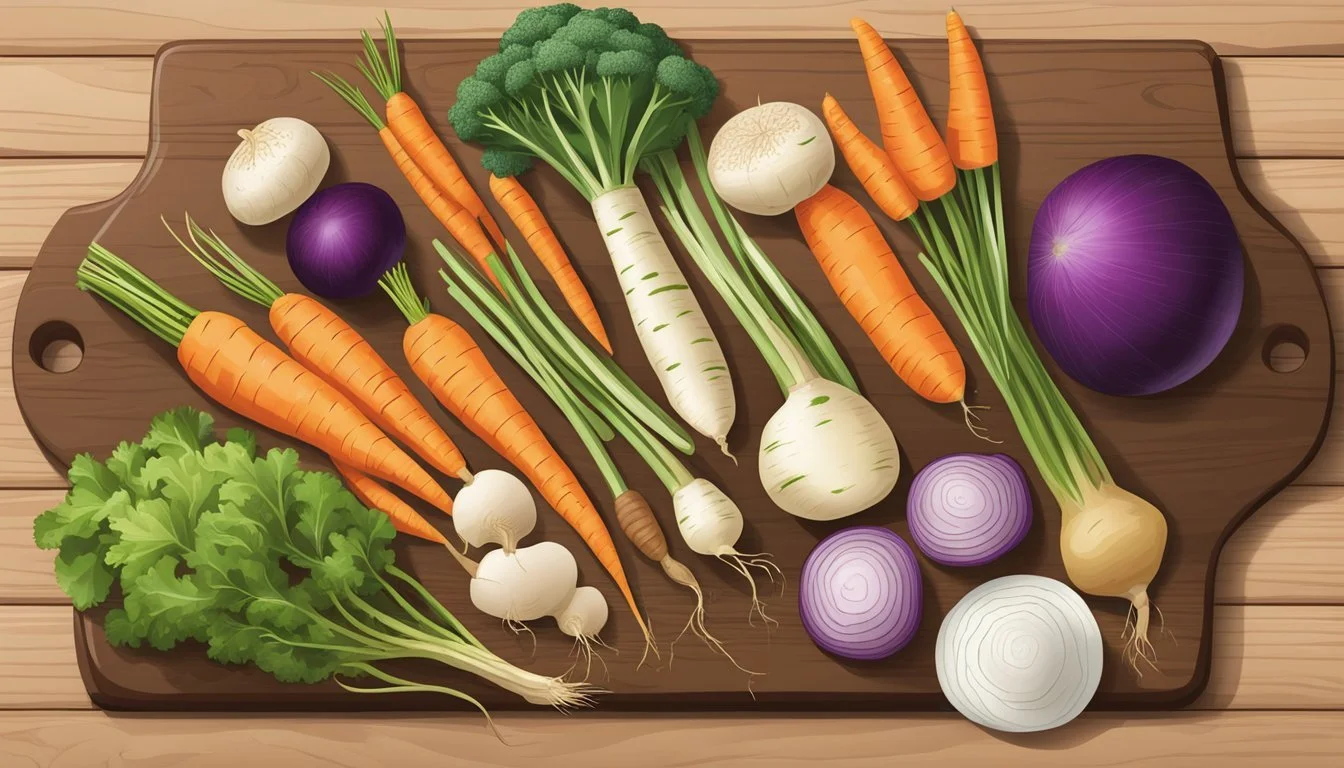Parsnips Substitutes
Top Alternatives for Your Recipes
For those who love cooking with parsnips but find themselves out of stock, having a list of reliable substitutes can save the day. Carrots stand out as one of the best alternatives because they share a similar size, shape, and cooking time. Whether you're roasting vegetables or preparing a hearty stew, carrots can seamlessly replace parsnips without altering the dish's texture drastically.
Another excellent substitute is the white carrot. This lesser-known variety shares a striking resemblance in both appearance and texture to parsnips. It offers a comparable bitter-sweet flavor, making it an ideal option for dishes that traditionally use parsnips. For a slightly different taste, turnips are also a strong candidate. Although turnips have a spicier, peppery undertone compared to the sweeter parsnip, they can enrich the dish with an interesting flavor profile.
Lastly, parsley root and rutabaga are noteworthy mentions. Parsley root mimics the look and texture of parsnips and can be used similarly in various recipes. Rutabaga, with its sweet and nutrient-rich qualities, provides a unique flavor twist, especially in soups and mashes, offering an exciting variation for those seeking to experiment in the kitchen.
Understanding Parsnips
Parsnips are a root vegetable closely related to carrots and turnips. Rich in nutrients and with a storied history, they offer health benefits that make them a valuable component of any diet.
History and Profile
Parsnips have been cultivated and consumed since antiquity. They were a staple in the diets of ancient Romans and Greeks. In medieval Europe, parsnips were a primary source of starch before the introduction of potatoes.
The parsnip, Pastinaca sativa, has a pale, cream-colored flesh with a nutty and slightly sweet flavor. They thrive in cold weather, which enhances their sweetness. Their appearance is similar to carrots, making them versatile in various culinary applications, from soups to roasted dishes.
Nutritional Values
Parsnips are an excellent source of dietary fiber, providing substantial assistance in digestive health. They also contain significant amounts of vitamins C and K, which are crucial for immune function and blood clotting, respectively.
Parsnips are rich in potassium and magnesium, important for heart and muscle function. They offer folate, essential for DNA synthesis and repair, and small but beneficial amounts of calcium and iron. A balanced portion of parsnips can contribute to daily nutrient requirements, supporting overall well-being.
Culinary Uses of Parsnips
Parsnips bring a sweet and nutty taste to a wide array of dishes. They are versatile and can be roasted, boiled, mashed, fried, or sautéed to suit different culinary needs.
Roasting and Baking
Roasting parsnips enhances their naturally sweet and nutty flavors. They can be cut into sticks or chunks, tossed with olive oil, salt, and pepper, and then roasted in an oven at 400°F for about 25-30 minutes. This method creates a crispy exterior and a tender interior. Roasted parsnips are a great addition to roasted dishes such as mixed vegetable trays and main course accompaniments.
Parsnips can also be used in baked dishes like gratins or casseroles. Layer thin slices of parsnip with other root vegetables, cream, and cheese for a rich side dish. The sweet taste of parsnips balances well with savory ingredients, creating a unique depth of flavor.
Boiling and Mashing
Boiling parsnips is another common method, particularly useful for making parsnip mash. Peeled and cut parsnips can be boiled until tender, then mashed with butter, cream, and seasonings to create a creamy side dish. This parsnip mash can be served similarly to mashed potatoes but offers a subtly different taste profile with its sweetness and nuttiness.
Parsnips can also be boiled and pureed into soups, contributing to a smooth texture and rich flavor. Adding parsnips to stews will provide a sweet undertone while thickening the broth.
Frying and Sautéing
Fried parsnips, including parsnip fries, offer a delightful crispiness. To make parsnip fries, cut parsnips into thin strips, lightly coat them in oil, and fry until golden brown. This technique brings out a different texture, making them a crunchy alternative to traditional potato fries.
Sautéing parsnips is another excellent method, especially when looking to add them to a stir-fry or as a supplement to a main dish. Thinly sliced parsnips can be sautéed with onions, garlic, or other aromatic ingredients to create a flavorful base for various recipes. The quick cooking method preserves their sweet and nutty taste while adding a bit of caramelization.
Choosing Parsnip Substitutes
When choosing a substitute for parsnip, it's essential to consider both the flavor profile and texture. Different vegetables can provide varying taste and texture experiences, so the right choice depends on the specific requirements of your recipe and personal preferences.
Flavor Profiles
Carrots are the closest match to parsnips due to their sweet, mild flavor. Both vegetables share a slightly earthy taste, though carrots are generally less sweet and have a hint of bitterness.
Turnips offer a peppery flavor that contrasts somewhat with the sweetness of parsnips. While not as sweet, their unique spice can add depth to various dishes.
Kohlrabi (German turnip) provides a mix of peppery and sweet flavors. It's a versatile substitute that brings a different yet pleasant taste to the table.
Rutabaga combines sweetness with a slightly earthy taste, making it a great alternative in stews and soups.
Salsify, also known as oyster plant, has a unique flavor profile, often described as slightly nutty and savory, enhancing the richness of dishes.
Texture Considerations
Carrots mimic the crunchy texture of parsnips closely, making them an excellent choice for dishes requiring a similar bite. They also cook within a comparable time frame, although a bit faster.
Turnips, while slightly firmer, retain their structure well in both cooked and raw forms. They work best in stews and soups where a medium firmness is desired.
Kohlrabi has a crisp texture, making it suitable for raw dishes or recipes requiring a crunch. Its firmness holds up well when baked or sautéed.
Rutabaga, with its denser texture, is ideal for recipes that need a soft, creamy consistency after prolonged cooking, like mashes or purees.
Salsify tends to be softer when cooked, blending seamlessly into creamy soups or mashed dishes, providing a subtle yet significant texture change.
Selecting the right parsnip substitute involves balancing flavor and texture to best complement the dish you're preparing.
Specific Parsnip Alternatives
When searching for a parsnip substitute, options are available that match the flavor, texture, and cooking properties needed for various dishes. These alternatives can range from root vegetables to starchy substitutes and other vegetables that can replicate the essence of parsnips in recipes.
Root Vegetable Alternatives
Carrots are one of the best substitutes for parsnips. They are closely related, sharing similar texture and size. Orange carrots, in particular, have a slightly sweeter taste and a shorter cooking time.
White carrots are less known but closely resemble parsnips in taste and appearance, making them an excellent substitute.
Turnips offer a slightly spicier and more peppery flavor compared to the sweet earthiness of parsnips. Despite this difference, they fit well into most dishes that call for parsnips, especially in winter recipes.
Parsley root is another substitute that mimics parsnip's texture and look. It's slightly earthier in flavor, but once peeled, it can be used almost identically to parsnips.
Starchy Alternatives
Sweet potatoes are versatile and bring a different level of sweetness and a softer texture to recipes compared to parsnips. They work well in soups, stews, and roasted dishes.
Regular potatoes provide a neutral taste and starchy consistency that can complement many recipes. Their texture changes less with cooking, making them suitable for mashes and gratins where parsnips might be used.
Celeriac (celery root) can be peeled and prepared much like parsnips. It has a distinct flavor that’s subtly celery-like but still mild, making it a good stand-in for parsnips in most recipes.
Other Vegetable Alternatives
Salsify resembles parsnips with its earthy flavor and creamy texture. It is less common but can be a great alternative in complex recipes that benefit from a unique taste.
Jicama adds a crunchy texture and mild, slightly sweet flavor to salads and slaw. Though it differs from parsnips in texture when raw, it can be cooked in various dishes to serve as a substitute.
Turnip greens and other leafy parts of root vegetables can sometimes serve as substitutes in recipes where the greens are used along with the root. They provide additional texture and flavor dimensions.
Special Considerations for Substitutes
When choosing parsnip substitutes, it's important to consider dietary restrictions and the availability and seasonality of the alternatives. These factors can significantly impact your choice.
Dietary Restrictions
Many people need to consider dietary restrictions such as allergies or specific dietary preferences. Allergy sensitivities can be crucial; for instance, some individuals might be allergic to certain root vegetables like carrots or celery. Substitutes such as turnips or rutabaga provide an option for those avoiding carrot-related allergies.
Some substitutes may be better suited for specific diets. For example, turnips and white carrots are low in sugar and suitable for low-carb diets, which makes them a good choice for those watching their carbohydrate intake. Meanwhile, individuals seeking nutrient-rich options might prefer salsify or rutabaga due to their dense nutritional profiles.
Availability and Seasonality
Availability and seasonality play a critical role when selecting parsnip substitutes. Parsnips and their substitutes like turnips and rutabaga are typically winter vegetables, meaning they are more available in the colder months. This makes them particularly suitable for seasonal menus.
During off-seasons, alternatives like carrots or celery might be easier to find, as they are more commonly available year-round. If the substitute has an orange color, like orange carrots, it can also change the visual appeal of the dish, impacting presentation.
It's worthwhile to check local markets for seasonal vegetables. Some lesser-known substitutes such as white carrots or salsify may be available at specialty stores or farmers' markets, providing more options when standard substitutes are out of season.
Unique Substitutes and Their Uses
Several unique substitutes can replace parsnips in culinary dishes. Each alternative brings its distinct flavor and texture, offering versatility in various recipes.
Lesser-Known Roots
Salsify is also known as the oyster plant. It has a delicate oyster-like taste suitable for soups and stews. Parsley root offers a similar texture to parsnips and a slightly earthier flavor when peeled and cooked.
Kohlrabi provides a subtle sweetness and a crunchy texture. This makes it a fitting raw substitute in salads, or it can be roasted for a caramelized flavor. Arracacha, or Peruvian parsnip, is a staple in South American cuisine. When cooked, it turns creamy and has a slightly sweet, nutty taste, ideal for purees and soups.
International Varieties
Rutabaga, a turnip and wild cabbage hybrid, has a sweet flavor that enhances mashed dishes and stews. Jicama adds a crisp and refreshing element to dishes, particularly in salads or as a raw snack. Daikon radish is common in Asian cuisine. It introduces a mild, peppery taste suitable for pickling, soups, and salads.
Beets provide a deep color and earthy sweetness, perfect for roasting or incorporating into borscht. These international varieties offer diverse flavors and textures, making them excellent parsnip substitutes in global recipes.
Healthier Parsnip Substitutes
For those looking to replace parsnips with healthier alternatives, several options are available that offer exceptional nutritional benefits.
Carrots are a popular choice. They are rich in vitamin A, which supports vision and immune function. Additionally, they provide a good amount of fiber, promoting digestive health.
Sweet potatoes are another great option. These are high in vitamin C and potassium, aiding in immune health and blood pressure regulation. They also contain more fiber compared to parsnips, making them a healthy substitute.
Celeriac, also known as celery root, is a fantastic alternative. It is lower in calories and high in vitamin K, which is essential for blood clotting and bone health. It also offers a good amount of fiber.
Turnips can be used as well. They are rich in vitamin C and fiber, contributing to strong immune function and a healthy digestive system. They also contain compounds that may have anti-inflammatory properties.
For a slightly different flavor profile, radishes are a choice worth considering. They are low in calories and high in vitamin C, promoting skin health and immune function. Radishes also offer some fiber, although in lesser amounts compared to the other vegetables listed.
Kohlrabi is another excellent parsnip substitute. It provides a substantial amount of vitamin C and fiber, supporting overall health.
Using these vegetables as substitutes can enhance the nutritional profile of dishes while offering diverse flavors and textures. Exploring these alternatives allows for healthier, nutrient-rich meals without sacrificing taste or versatility.
Preparing Substitutes in Popular Parsnip Dishes
When substituting parsnips in popular dishes, it is crucial to adjust cooking times and adapt spices and seasoning to ensure the best flavors and textures. These adjustments will ensure that the substitute vegetable harmonizes well with the dish's overall profile.
Adjusting Cooking Times
Different vegetables have varying cooking times, which means careful attention to achieve the desired texture. Carrots and turnips, for instance, generally cook faster than parsnips.
Carrots need 2-3 minutes less cooking time, as they soften quickly. Turnips may require similar adjustments. Celery root cooks in about 20-25 minutes, similar to parsnips, making it an excellent substitute without significant timing changes.
Roasted carrots as a parsnip substitute should be monitored closely. Maintain a similar roasting temperature but start checking for doneness a bit earlier. A useful tip is to cut all substitute vegetables to a similar size to ensure even cooking.
Spices and Seasoning Adaptations
The earthy flavor of parsnips pairs well with certain spices, so adjusting seasoning is key when using substitutes. Celery root and potatoes have a subtler taste but can be enhanced with additional herbs like thyme or rosemary.
For mashed potatoes as a parsnip substitute, adding a bit more garlic or nutmeg can elevate the dish. Turnips might need a touch of sugar to balance their slightly bitter note.
Celery is another great match for parsnip recipes but often needs added salt and pepper to amplify its milder flavor. When using carrots, adding a hint of cumin can complement their natural sweetness.
By carefully adjusting cooking times and seasonings, common parsnip substitutes will seamlessly blend into your favorite dishes.







